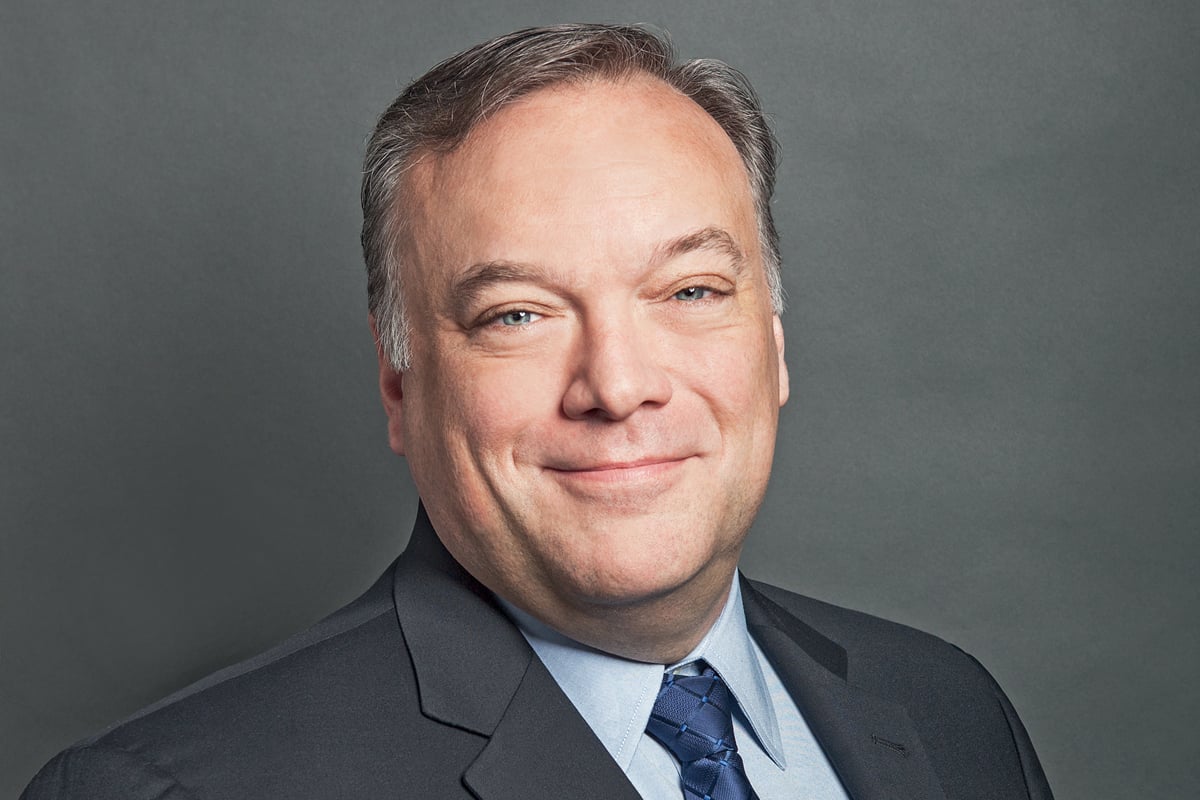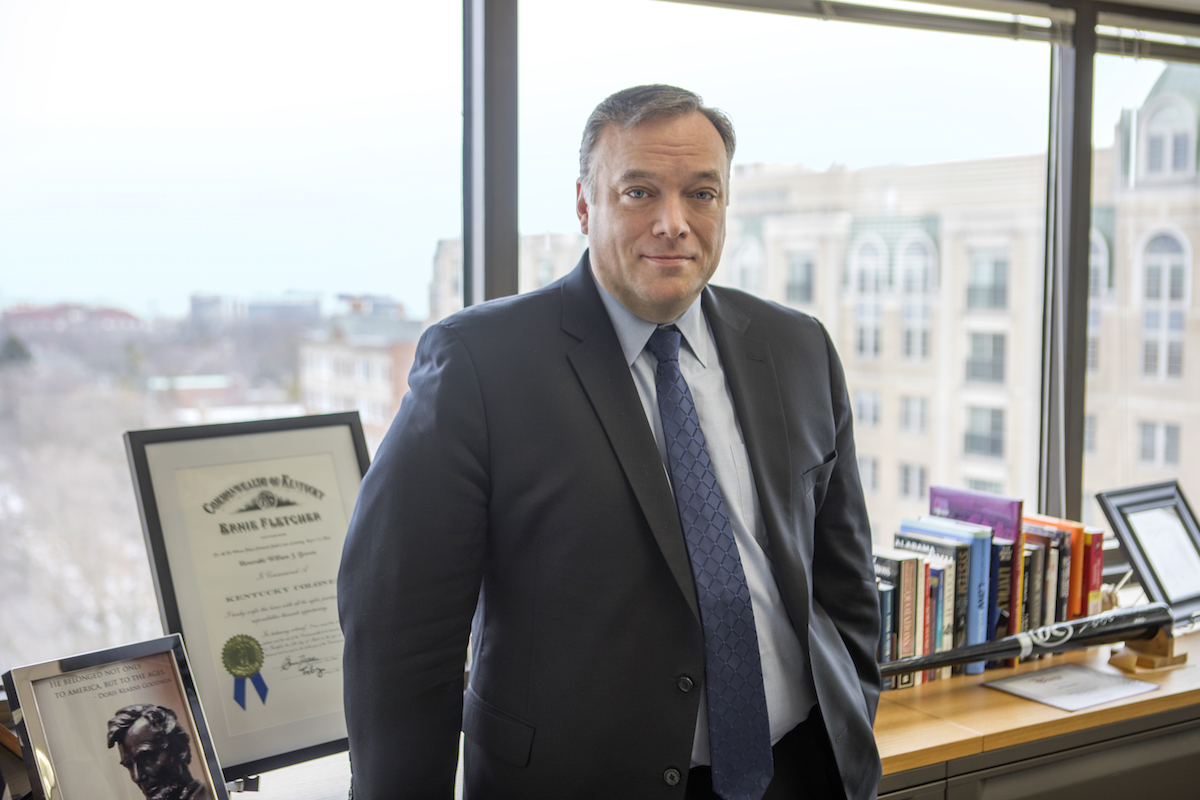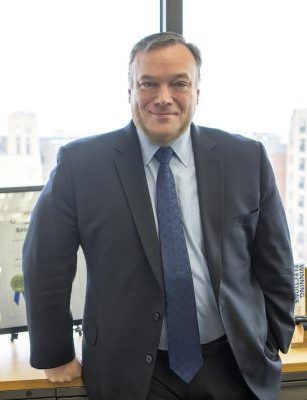In the world of association management, Bill Brown has become a poster boy for culture change. “We have been able to really build a corporate environment that has become less about the word ‘corporate’ and more about community,” the Executive Director of the American Massage Therapy Association (AMTA) explains to The CEO Magazine.

“I think that is how we’ve been able to take this organization to another level.” The transformation he has driven has proven so successful that similar associations in other industries have started to sit up and take notice.
And now his phone has started ringing. “I’m getting invitations to come and speak about how we’ve been able to grow the membership of an organization that is 77 years old by 70 per cent,” he continues.
Treading water is the term Bill uses to describe the AMTA when he took on the role in 2013. “It needed to be reinvigorated, the culture of the organization really needed to change.”
Like any long-running institution, there was also a need to reorganize, to realign itself with the changing world we live in.
Especially with a membership base made up of different ages and from different backgrounds. Under his leadership, inclusivity and diversity have become more than buzzwords as the association strives to ensure that every voice is heard.
“We have to be open and accepting of all types of people in the profession and where they choose to work and how they choose to go about their career.
We have to be accepting and understanding of whatever you choose to do in your career, and help everyone equally,” he explains. And the strategy has worked. “When everyone can see you live it, that these are more than words, that draws people to you.”
It’s our mission to give back. The better we do, the more we can achieve for the profession.
‘‘The latter is something that can be said for ‘ from the University of Illinois, he brings years of experience across a variety of associations to the position, including those for professional architects, realtors and bankers.
While acknowledging that every industry has its different challenges, the attraction of association management, he says, is the ability to be involved with very passionate people.
“I have really enjoyed my career path because I’m helping professions, and supporting individuals who love what they do as they build their careers,” he explains. The AMTA, Bill continues, is no different than other organizations he has been involved with.
“In health, like every other profession, people believe in what they do. This is an opportunity to help both individuals and the profession to grow and to succeed,” he says.
“Whether they are new to their industry or seasoned professionals, we are there to provide people with tools to stay current and keep up with education.”
As the country’s largest not-for-profit professional association for massage therapists, massage schools and students, the AMTA serves its industry broadly.
Bill explains, “Like most associations, a big focus of ours is education. We support both schools as well as continuing education as practitioners move through their career.” Advocacy is another important aspect of the AMTA’s role.
“We help to create fair and consistent licensing laws for therapists across all states so every therapist who meets certain standards has the same opportunity to practice. “Community is also an important way we support our membership,” he continues.
“We allow them to have a variety of networking opportunities to come together to learn from and support each other.”
A permanent staff of about 70 based in its Chicago headquarters is bolstered by a team of approximately 1,500 volunteer leaders in every state across the country (including the District of Columbia and Puerto Rico).
These benevolent members form a chapter network that delivers education and other programs on a local level.
“The advantage is that, if you cannot attend our National Convention, you can still go to a local meeting and have that kind of face-to-face community interaction,” he says.
Another integral part of the AMTA’s mandate is the promotion of the health benefits of massage and the scientific research behind it – not only to the general public but also to “like-minded stakeholders in health care and other areas,” he explains.
Increased awareness of the medical advantages of massage is what Bill identifies as the biggest transformation to sweep through the industry in the past decade.
“The market has changed. Today, massage is not only seen as a form of luxury and relaxation, it has become a bigger part of the healthcare system,” he says.
“There is more and more research being undertaken around massage therapy as a tool for physicians to prescribe for many ailments and conditions,” he continues.
Most pertinently, as the country is gripped by an opioid epidemic, massage is a technique that is increasingly being viewed as an alternative to traditional pharmacological pain treatments.
We’ve reduced conflict in the workplace and problems with teams not working well together.
“There are a lot of occasions where, in the past, prescriptions were used, but now massage is being seen as a true pain management tool for people,” he explains.
“Obviously, there are times when we’ll still need medication, but there are a lot of alternative pain plans that are being rolled out now because of the issues with some of the medications that were being prescribed.”
As the health and wellness benefits of massage become better – and more widely – understood, Bill explains that the system is also adapting to regulate it.
“Government-run healthcare, such as Medicare advantage plans, are now approving massage therapy for pain management,” he explains.
“And post-surgical massage is becoming increasingly advocated for by medical centers like the Mayo Clinic and the Cleveland Clinic.
“Another big movement that we’re seeing now is that massage is being used a lot in Veteran’s Affairs as a part of post-traumatic stress disorder treatments,” he continues.
Overall, it’s a trend that he doesn’t see diminishing any time soon. “I think as the profession has become mainstream, massage increasingly is a component of everyone’s health and wellness routine,” he explains.

Viewed from another angle, the new boundaries of the industry also mean that the definition of stakeholders has shifted too.“Traditionally, you would visit a spa or your local massage therapist for aches and pains or for relaxation,” he says.
Now, that has expanded. “A lot of therapists today work in hospitals or medical clinics or with physical therapists.” The industry may be changing, but for Bill and the association, their members are as much a priority now as the day the association first opened its doors.
“They are our customer,” he emphasizes. “It’s about being in tune with what they need in an everevolving environment, about helping them to be successful and about how we can continue to stay on the pulse of that.”
Which means that, while massage may be an industry built around the human touch, the empirical essons are always at the forefront of his mind. “There is a lot of research data that we have to collect to make knowledge-based decisions relevant to the group we represent,” he explains.
“It’s probably the biggest piece of what we do. “We try to stay ahead when it comes to working with data collection and keeping in touch with our customers to identify what is more than just a passing fad,” he continues.
“It’s not about doing something because it sounds like it’s the thing to do. Instead, we question whether these new trends are really good for our people.
It’s about remaining data-driven and focused on the member and making sure we continue to improve their day-to-day.
We want to give them the best information available in the field.” This, he adds, is a large part of how the association has achieved so much under his leadership.
While there are other massage therapy organizations, Bill explains that what sets the AMTA apart is its not-for-profit charter.
“The other corporations in this field are for-profit companies,” he says. “But that’s also been one of my more interesting professional challenges, since similar associations in other professions don’t face that kind of competition.”

Yet, so successful has the association been when faced with almost unprecedented for-profit competition that it has become a case study for other associations to emulate. So, why such success?
“With the generational changes and the attitude shifts that are happening in this country, there’s an increasing sense of ‘the non-profit advantage’, as we like to call it,” Bill explains.
“It’s an opportunity to be part of something that is more about the good of what you do and what your profession is about than the bottom line.”
And while some companies place great emphasis on showcasing their support for other’s philanthropic causes, Bill explains that, at the AMTA, it’s more than just a division of the business.
“It’s our mission to give back. The better we do, the more we can achieve for the profession and for its members,” he says.
As this core message has been communicated to a wide audience, he explains that “it has improved our brand over any other that is involved in the massage therapy profession”.
Primarily funded by member dues, Bill asserts that the AMTA is now the number one brand in the field, despite having big spenders for competitors.
“As a non-profit that gives back, we are seen as the most trusted and most respected name in massage therapy,” he says.
A lot of (massage) therapists today work in hospitals or in medical clinics or with physical therapists.
Reflecting on all that has been achieved so far, it’s obvious that he has a lot to be proud of. But it’s the way the association has been able to drive cultural change that is undoubtedly the highlight.
“We’re a multi-generational office, with everyone from millennials to baby boomers on the staff,” he says.
And unlike those high-tech industries where the company culture is created around a single generation, he reminds us that the AMTA is an association where every generation is represented.
“We have tried to create a working culture and a working environment that suits everybody.” The fact it has been achieved, he adds, is the reason the AMTA has witnessed such growth under his leadership. “We put culture first,” he says.

This cultural shift can also be felt in Bill’s strategy. “We have set very basic expectations for our employees that both our board and our staff live by,” he explains.
The business model revolves around four simple principles: “It’s about having a positive attitude; promoting good work ethic and putting in a full day’s work consistently; and coming to work every day and helping each other,” he says.
Loyalty is the word he uses as he further explains this last element. “It’s about being loyal to your fellow co-worker. Of course, some days you might be having a bad day and the going is tough.
But we try to pick each other up and create an atmosphere where no one is going to succeed by climbing over someone else.
“When you start talking about baby boomers and millennials working together, we’ve tried to take a lot of targets off the table,” he continues.
Written goals are out. “So many people have been burned by being managed by a spreadsheet, where whether you get a number or you don’t is how you’re ultimately judged,” he explains.
“I believe that when people do their best work, and do it consistently, the results will follow.
What we have tried to do is make it about the process; so that we try to get better every day and try to change things as we go along, which has really been good for our younger team members as the millennial generation crave a lot more feedback.”
As a non-profit that gives back, we are seen as the most trusted and most respected name in massage therapy.
Enough time has passed that Bill can clearly identify other benefits. “We’ve reduced conflict in the workplace and problems with teams not working well together,” he says.
“What we’ve created is more of a challenge culture, where we challenge each other to be better every day.
It’s about being open to ideas that improve the process over some number that a manager has just set that may be too low and easily achievable or may be too high and a discouragement.”
The positive, team-focused environment that Bill has fostered at the AMTA means that staff turnover is now extremely low. “Our employees will stay for long periods of time,” he says.
“They want to be here and they want to make things better.” And that feeling then follows through to its swelling membership levels. “People who join our mission can feel that culture of inclusiveness,” he continues.
“They believe us when we say that we’re really going to bat for them, that we’re really trying to improve their profession.”


